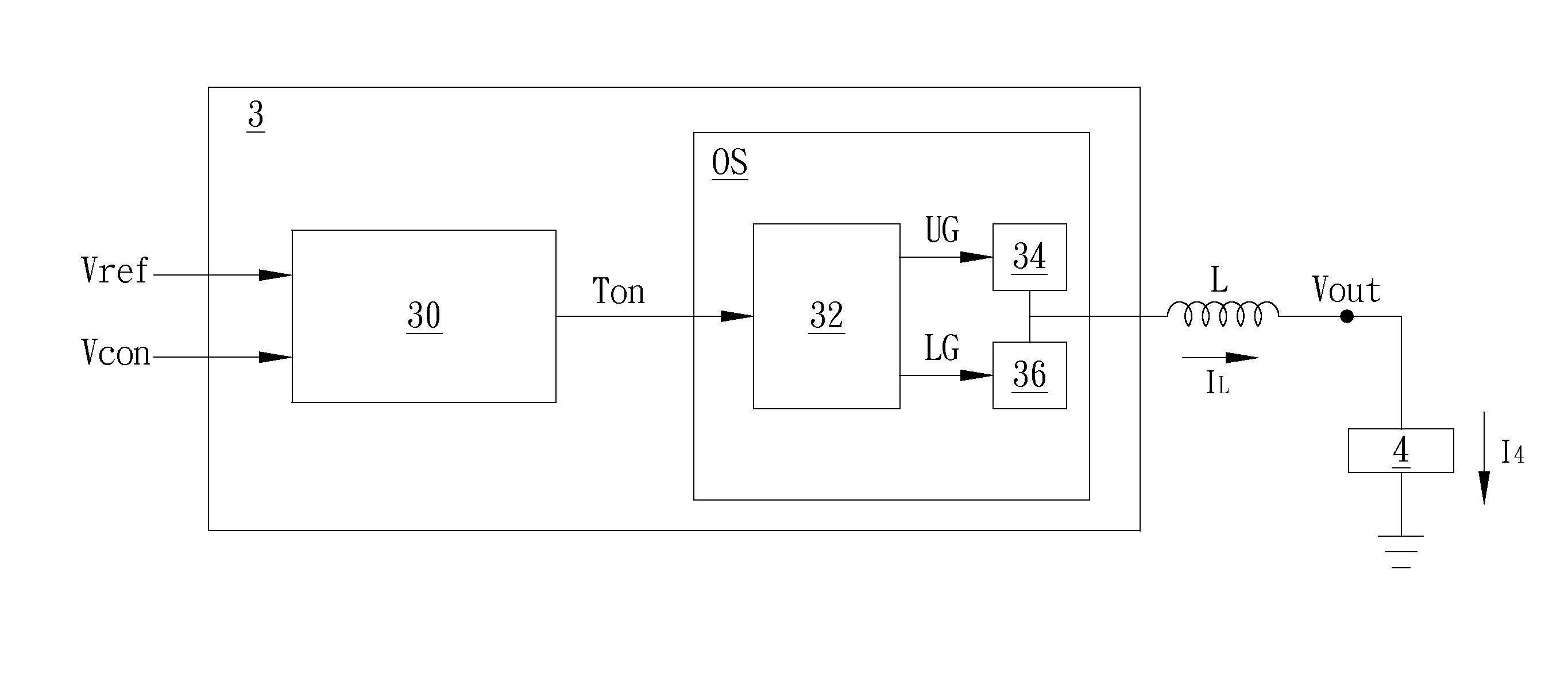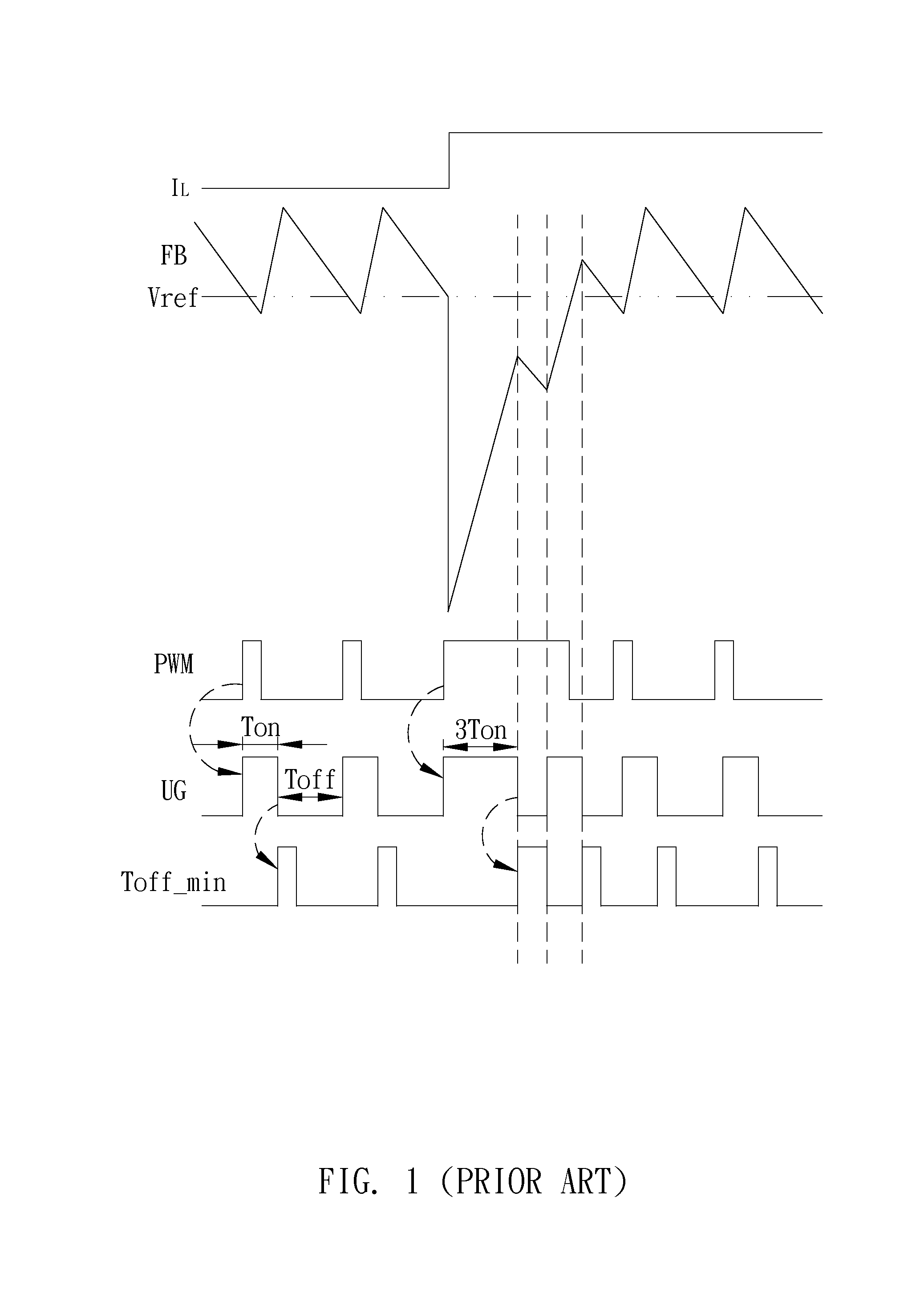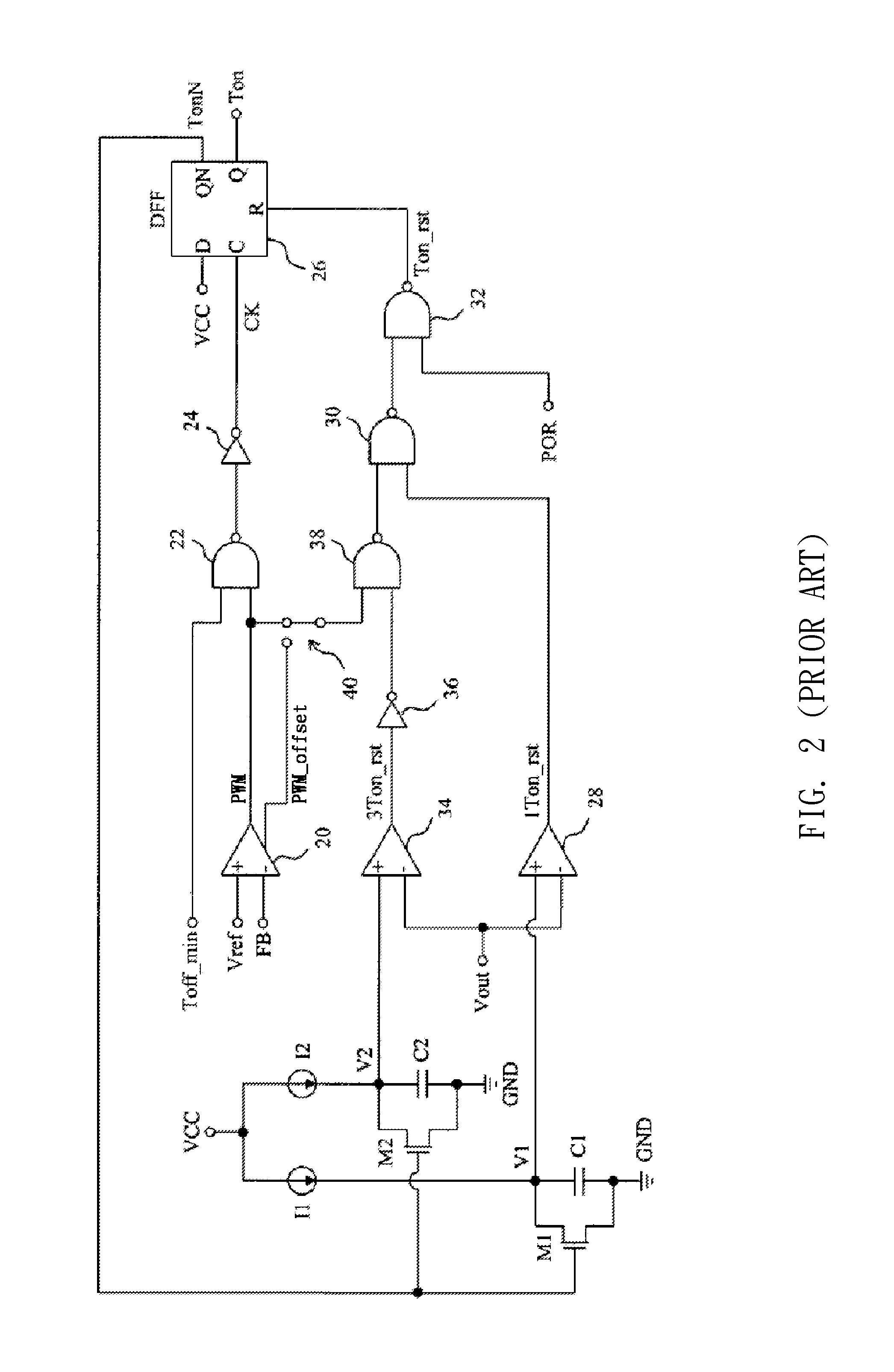Control Circuit, Time Calculating Unit, and Operating Method for Control Circuit
- Summary
- Abstract
- Description
- Claims
- Application Information
AI Technical Summary
Benefits of technology
Problems solved by technology
Method used
Image
Examples
Embodiment Construction
[0022]A preferred embodiment of the invention is a control circuit operated in a power converter. In fact, the control circuit of the embodiment of the invention can be applied to a fixed frequency DC-DC converter or a constant-on-time (COT) DC-DC converter, but not limited to these. The control circuit of the invention can be applied to other power converter circuit structures, such as an AC-DC converter or a Dc-AC converter.
[0023]At first, please refer to FIG. 3. FIG. 3 illustrates a circuit structure schematic diagram of the control circuit operated in the power converter of this embodiment. As shown in FIG. 3, the control circuit 3 is coupled to a load 4 via the output inductor L. The control circuit 3 includes an output stage OS and a time calculating unit 30. The time calculating unit 30 is coupled to the output stage OS. The time calculating unit 30 receives a control signal Vcon and a reference voltage Vref and selectively provides a switch conducting signal Ton to the outpu...
PUM
 Login to View More
Login to View More Abstract
Description
Claims
Application Information
 Login to View More
Login to View More - R&D
- Intellectual Property
- Life Sciences
- Materials
- Tech Scout
- Unparalleled Data Quality
- Higher Quality Content
- 60% Fewer Hallucinations
Browse by: Latest US Patents, China's latest patents, Technical Efficacy Thesaurus, Application Domain, Technology Topic, Popular Technical Reports.
© 2025 PatSnap. All rights reserved.Legal|Privacy policy|Modern Slavery Act Transparency Statement|Sitemap|About US| Contact US: help@patsnap.com



